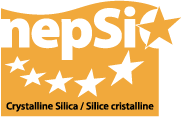Hierarchy of Risk Control
These methods of dust control are based on the “Hierarchy of Risk Controls” – essentially a list of ways dust is managed, organised in order of how effective they are:
Eliminate
The physical removal of a hazard is the best way to control it. No materials containing crystalline silica = no RCS! However, this is often not practical in our industry.
Substitute
Replace the source (material or process) that generates RCS with something that does not (or at least a produces a lesser amount). This can mean changing our work processes to make them safer. For example, changing from a dry process to a wet process.
Isolate/separate
Create a barrier between the worker and the RCS. This is where the enclosure dust control type comes in!
Engineer
These do not eliminate hazards, but rather control them, so that dust generation is minimised and so that people are protected from hazards. Using water sprays to limit dust is an example of this! Engineering controls are good, because they protect everybody in the workplace.
Organisation
Change the way people work. Examples of administrative controls include procedure changes, employee training, and installation of signs and warning labels. Clean regularly your workspace. Well done, you are already doing this by taking this course 😉
Procedures
Following safe working procedure helps reduce or prevent risk. This is a must – if we don’t follow the safe working practices, they won’t be effective!
PPE
Personal protective equipment (PPE) is placed last, because it only protects the wearer and because it can become ineffective if damaged or not used properly. However, it’s still absolutely vital as a last resort for keeping RCS out of your body – so if you have been issued with PPE at work, make sure you use it!
The graphic below shows the hierarchy in the context of activities that employers and employees can do to protect themselves.

